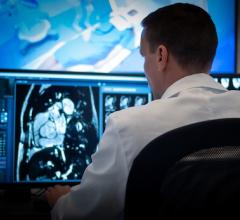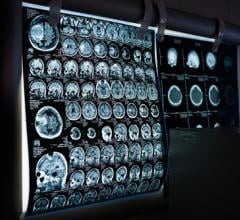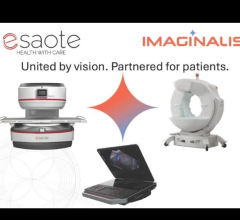November 29, 2007 – A study presented at RSNA 2007, that used long-time-scale, global helium-3 diffusion magnetic resonance imaging (MRI), found that secondhand smoke damages lungs.
The study, conducted by researchers at the University of Virginia School of Medicine in Charlottesville and The Children's Hospital of Philadelphia, examined the lungs of 43 volunteers, including seven current and former smokers and 36 people who had never smoked, 18 of whom had a high level of exposure to secondhand smoke.
"It's long been hypothesized that prolonged exposure to secondhand smoke may cause physical damage to the lungs, but previous methods of analyzing lung changes were not sensitive enough to detect it," said Chengbo Wang, Ph.D., magnetic resonance physicist in the Department of Radiology at The Children's Hospital of Philadelphia.
Helium-3 diffusion MRI differs from conventional MRI in that the patient inhales a specially prepared helium gas prior to imaging, and the scanner is adjusted to collect images showing this helium gas in tissue. MR measures how far the helium atoms move, or diffuse, inside the lungs during a specific time period, 1.5 seconds in this study. Using this method, radiologists and physicists can detect changes deep in the small airways and sacs in the lungs, which can break down, become enlarged and develop holes after prolonged exposure to cigarette smoke. Helium-3 diffusion MRI identifies this damage by measuring the increased distance the helium atoms move.
"With this technique, we are able to assess lung structure on a microscopic level," Dr. Wang said.
Measurements were translated into scores called apparent diffusion coefficient (ADC) values for each of the participants. An increased ADC value indicates that the helium atoms were able to travel farther during the measurement time. Fifty-seven percent of the smokers and 33 percent of the nonsmokers with high exposure to secondhand smoke had ADC values greater than 0.024, suggesting that early lung damage was present. In addition, 14 percent of smokers, 67 percent of high-exposure nonsmokers, and 39 percent of low-exposure nonsmokers had ADC values below 0.0185. Relatively low ADC values in adults are a possible indication of a developing respiratory problem, such as chronic bronchitis or asthma.
"These findings suggest that breathing secondhand smoke can injure your lungs," Dr. Wang said. "Since legislation to limit public exposure to secondhand smoke is still being considered in many states, we hope that our work can be used to add momentum to the drive to pass such legislation."
For more information: www.rsna.org


 December 15, 2025
December 15, 2025 









